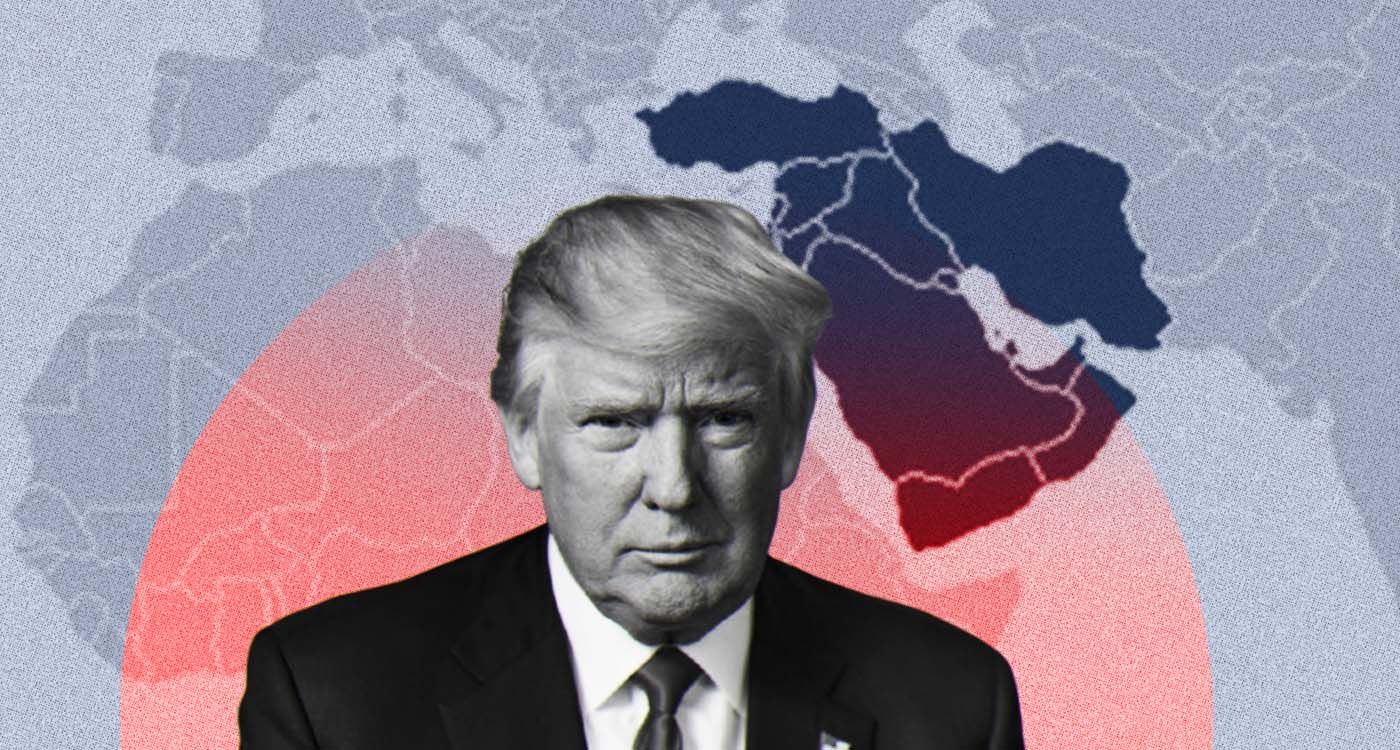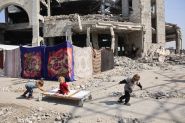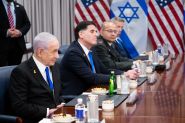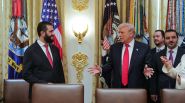- Home
- Arab World
- How Trump’s Plan Tries to Rewire the Middle East’s Deterrence Map

©This Is Beirut
In a region addicted to repetition, President Donald Trump is once again attempting to rewrite the script. His new “Gaza Peace Plan,” a 20-point proposal for a ceasefire, hostage exchange and technocratic governance under a US-chaired “Board of Peace,” is more than a humanitarian play. It’s a geopolitical lever meant to corner Tehran, freeze its proxies and pressure Lebanon’s Hezbollah into a new political reality.
For once, Gaza is not the endgame. It’s the opening move of a broader design: to reshape deterrence from the Mediterranean to the Gulf.
Since late September 2025, Trump’s envoys have pushed an ambitious formula: a total ceasefire, the release of all Israeli hostages and a temporary international administration to govern Gaza, one chaired by Trump himself and advised by figures like Tony Blair. Hamas, bruised and cornered, agreed to parts of the plan but rejected the core demand – disarmament.
Israel, still reeling from domestic fractures, endorsed it cautiously. Netanyahu knows that the optics of peace serve his survival, but not at the expense of security. Trump, for his part, framed it as “the first real shot at greatness in the Middle East.”
But beneath the grandeur, the plan’s intent is coldly strategic: to remove the daily warfare that gives Iran’s axis its oxygen. If Gaza falls quiet, Iran loses leverage. If the ceasefire holds, the resistance economy collapses, from Beirut to Sanaa.
Behind the scenes, Tehran is in crisis mode. The June 2025 Iran-Israel war left deep scars – Israel’s air force shattered key nuclear facilities, US stealth bombers struck enrichment sites, and dozens of IRGC commanders and nuclear scientists were killed. Ayatollah Khamenei retreated to a fortified bunker, naming successors in case of his death.
Now, with the UN snapback sanctions reactivated this month, Iran’s economy faces renewed suffocation. Oil exports are being tracked, banks re-isolated and arms imports frozen. Trump has already warned that “all hell will break loose” if Iran dares resume weaponization.
Yet Washington’s real weapon is timing. The Gaza plan was deliberately launched before the sanctions expired. It positions Trump as a peacemaker while re-establishing American coercion through economic siege. Iran’s options narrow: accept sanctions and silence its proxies, or retaliate and risk annihilation.
That’s why Tehran’s tone has shifted, from fiery threats to cautious diplomacy. It’s quietly reviving channels with Riyadh, Moscow and Beijing, trying to survive a US-Israeli squeeze without provoking an all-out regional war.
Lebanon, always the mirror of regional storms, is now the test case. President Joseph Aoun, the army-chief-turned-head-of-state, is presiding over a fragile but historic transition. For the first time in decades, the Lebanese state has entered Hezbollah’s weapons sites under UNIFIL coordination.
Hezbollah, decapitated after the 2024 war and Nasrallah’s assassination, is operating in political survival mode. Its remaining leadership, led by Naim Qassem, is attempting to play diplomat, reaching out to Saudi Arabia, framing “resistance” as a national cause, and threatening civil unrest if disarmed.
But the numbers tell a harder truth. The group has lost over 80% of its missile stockpile, 15 senior commanders and its main Syrian supply line. Its deterrence rests more on myth than arsenal. For the first time, it is not defending Lebanon’s sovereignty – it is defending its own existence.
Trump’s Gaza deal directly undermines Hezbollah’s ideological fuel. A ceasefire in Gaza erases the justification for “resistance” rhetoric. Iran’s weakened state reduces financial flow. And a strong Lebanese president, backed by Western aid, could finally shift the internal balance toward national sovereignty rather than a militia veto.
If Gaza is the battlefield of images, Lebanon is the laboratory of consequences.
Trump’s regional chessboard has three interlocking moves:
1. Gaza Ceasefire: Reduce daily conflict; cut Iran’s influence by removing the justification for “resistance.”
2. Iran Sanctions Snapback: Rebuild economic isolation; force Tehran into defensive diplomacy.
3. Lebanon State Restoration: Support Joseph Aoun’s consolidation of state power to dismantle Hezbollah’s autonomy under UNSCR 1701.
Each move amplifies the other. Gaza’s calm weakens Tehran’s leverage. Sanctions deepen Hezbollah’s isolation. And Lebanon’s political stabilization deprives Iran of its last strategic frontier on the Mediterranean.
But the system is fragile. One misfire – a botched ceasefire, an Israeli overreaction, a Hezbollah provocation – could unravel the balance. History has taught us that in the Middle East, peace processes fail faster than missiles fly.
Over the next 90 days, expect managed de-escalation, not peace.
• Gaza may witness a partial ceasefire-for-hostages deal, under international verification.
• Iran will respond with cyberattacks and proxy signaling, not open war.
• Lebanon’s army will continue taking over southern zones under quiet US supervision, as Hezbollah’s influence recedes northward.
Trump’s gamble is psychological: to present himself as both the dealmaker and the disciplinarian, the man who makes peace by scaring everyone enough not to fight.
And strangely, it might work.
Because after two years of bloodshed, from Gaza’s ruins to Tehran’s blackouts, even the most militant actors now understand the same truth:
You can’t rebuild power on ashes forever.
The Trump peace plan, the Iran sanctions snapback and the slow disarmament of Hezbollah are not separate events. They’re one architecture, a US-designed containment system built on fear, fatigue and transactional diplomacy.
It’s not idealism that drives it, it’s exhaustion.
And in the Middle East, that might be the only kind of peace that actually lasts.
Read more





Comments